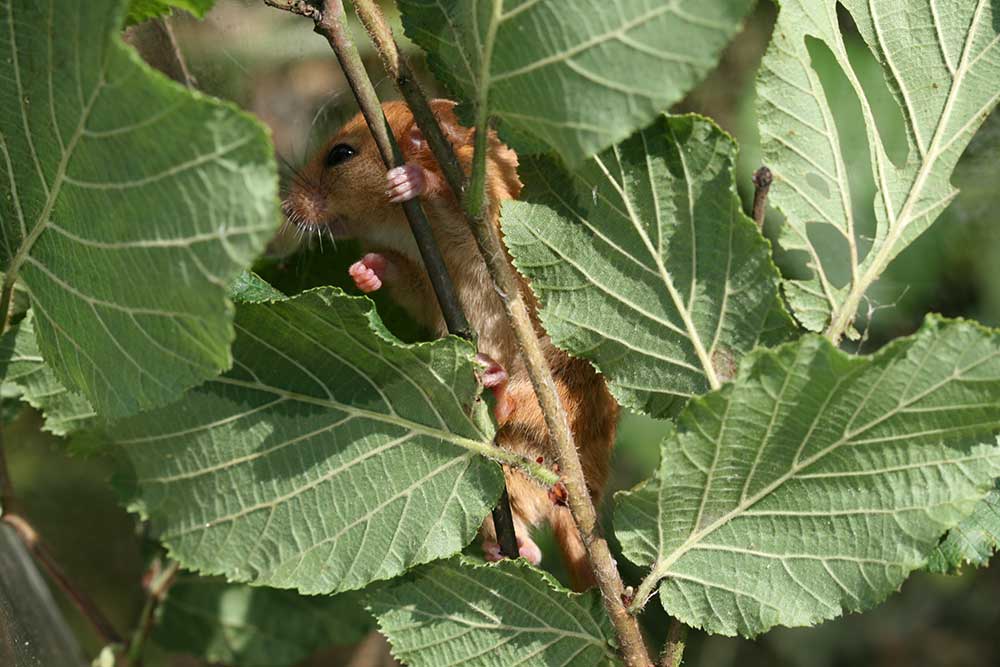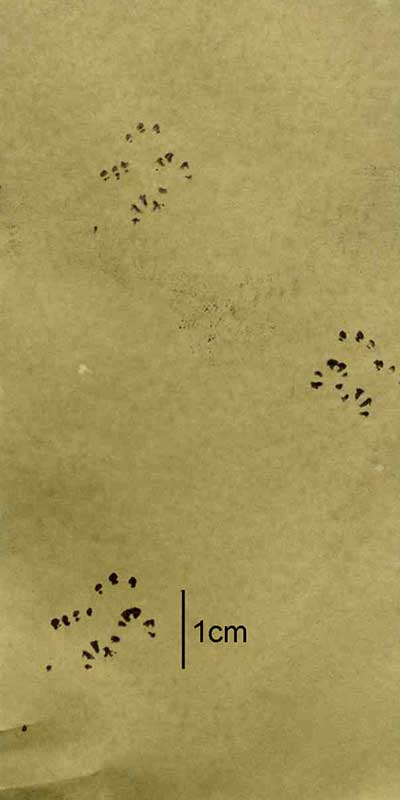Hazel dormice footprint tunnels

Footprint tunnels
There have been various attempts investigating the use of footprint tunnels as a potential way of detecting dormice such as this poster on using Tetra pak tracking tubes to detect dormice seen at the 2014 International Dormouse Conference.
People from Nottinghamshire, Devon and Suffolk have tried to quantify the method so that it could be used as a dormouse survey method. A report from the Nottinghamshire work concluded: This study successfully demonstrated that the use of footprint tracking tunnels is a viable method of detecting dormouse presence, both in scrub vegetation and sub-optimal habitat. Detection rates were often far quicker than that of nest-tubes, and Identification of prints was easily undertaken out in the field, with minimal experience.
PTES funded a project by Suffolk Wildlife Trust to look at the viability of using footprint tunnels as a new survey methodology. An article discussing the project, the result and recommendations was published in the CIEEM magazine.
The recommended survey effort for ecological professionals is shown below but any number of tunnels (in multiples of 5) can be used for any number of months from May to October. This information, along with an assessment of the broad habitat type will give a probability score of the likelihood of dormice being absent if the survey is negative. This is discussed in more detail in survey recommendations for ecological consultants and conservation projects.
There is practical guidance for surveying for hazel dormice using footprint tunnels available and the result of any footprint tunnel surveys can be reported here:
Please note that negative results are as important as positive results.
Recommendations for professional practice
The differences in the detection rates varies between months with highest detection rates between May-October. Analysis of the data revealed that if 50 footprint tunnels are deployed for any consecutive three months between May to October, the probability of detecting dormice, even in habitats where they may occur at low population densities, is 97.5%.
Footprint tunnels provide greater certainty of detection of hazel dormice in hedgerow and scrub habitats and are more likely to achieve positive results within a shorter timescale, when compared with nest tubes and nest boxes.
It should be noted that at the present time, the use of footprint tunnels is not an acceptable method to Natural England or Natural Resources Wales to demonstrate dormouse absence at sites.

Advantages of footprint tunnels
- A non-invasive survey technique which does not require a licence as the chance of disturbing dormice is very low.
- Compared with nest tube surveys, footprint tunnels can reduce the survey period required and provide an indication of the presence or likely absence of dormice at a site.
- The cost of the materials compares well with nest tubes, although the twice-monthly checks to re-ink the pads and change the papers requires increased surveyor time. The tunnels are heavier and bulkier than nest tubes and if access to the survey location is only by foot, then fewer can be carried by a surveyor at any time.
- Footprint tunnels are also an ideal survey method in areas of high public disturbance because should the tunnel be investigated; a dormouse is highly unlikely to be present. In contrast, they are more likely to be present within a nest tube or nest box during the day and consequently more vulnerable.
- Although dormice footprints can be very faint and hard to spot, the identification of dormouse nests in nest tubes can also be difficult.
We have been working to save hazel dormice in the UK for over 20 years. Find out about our campaigns and how you can help.
